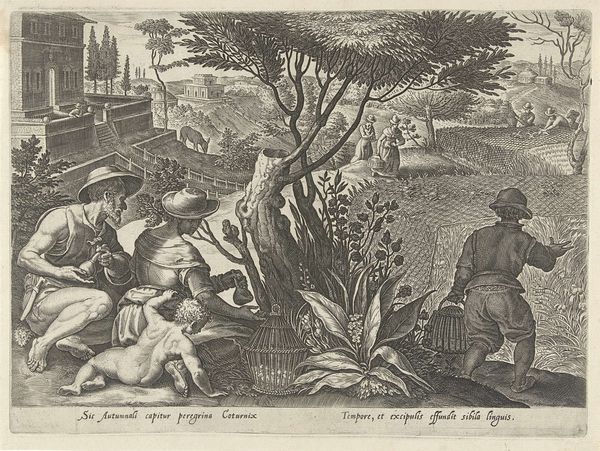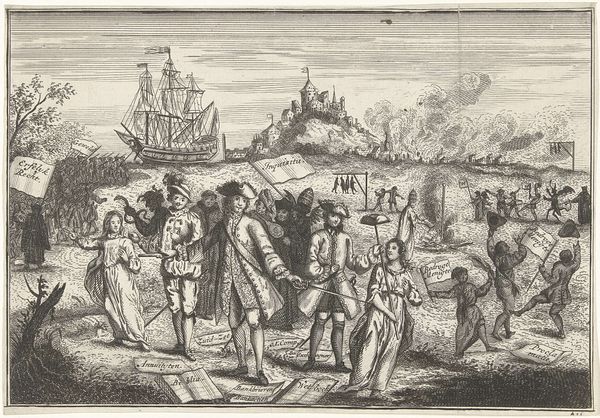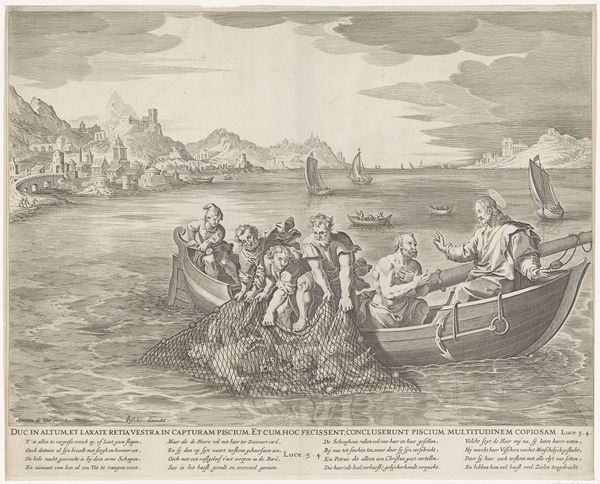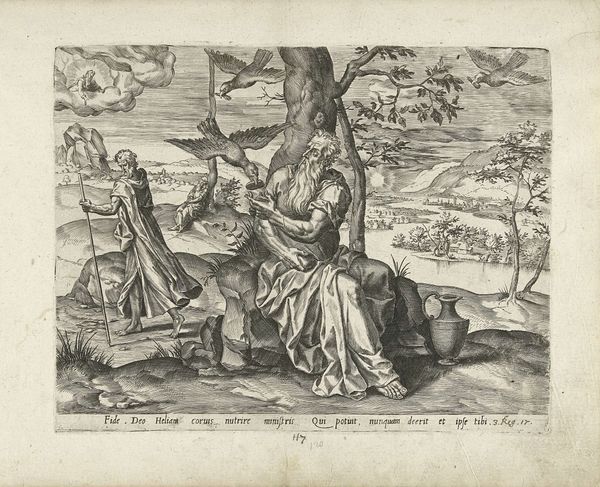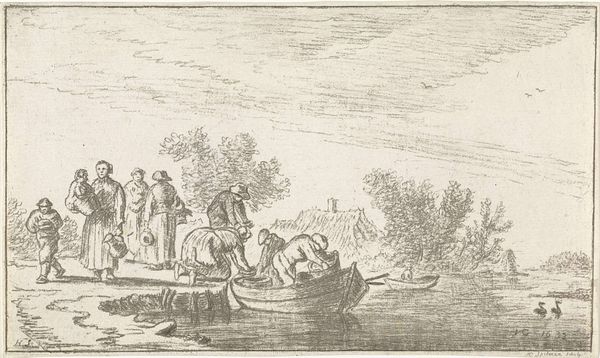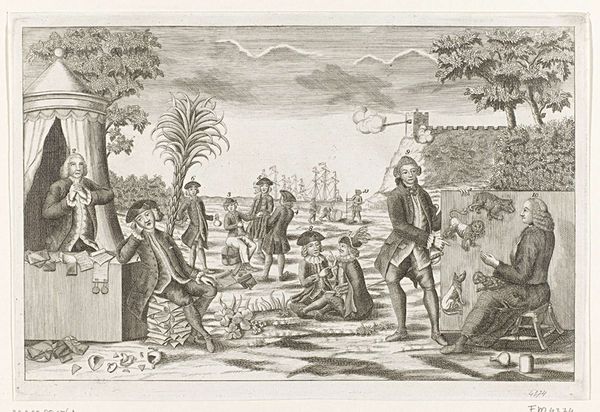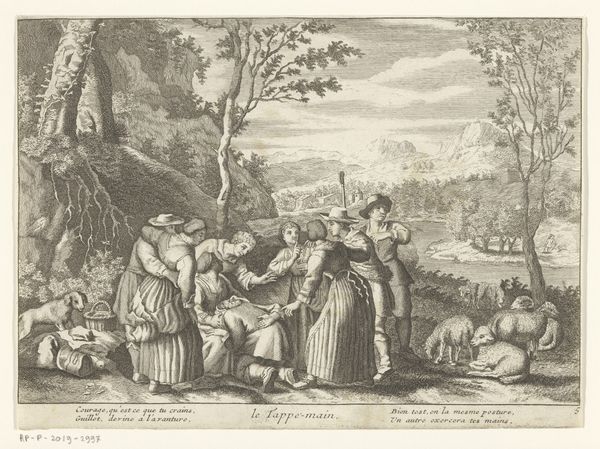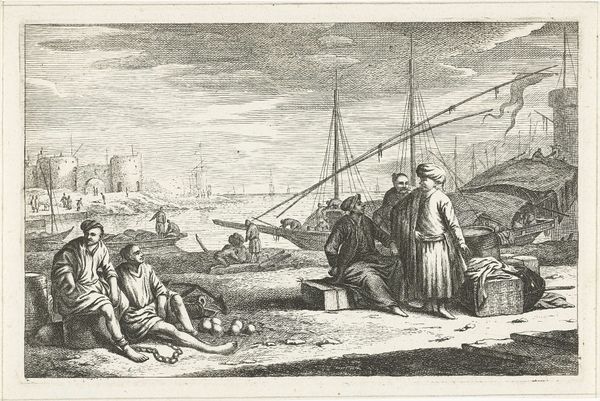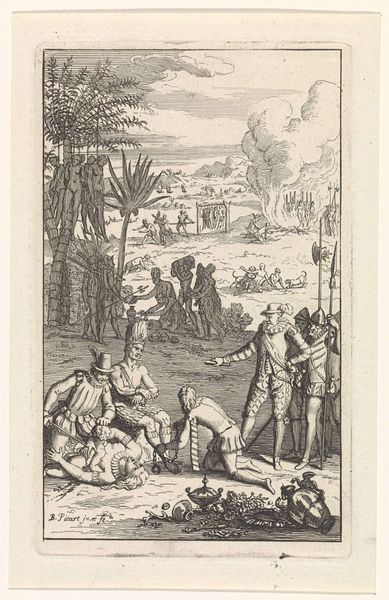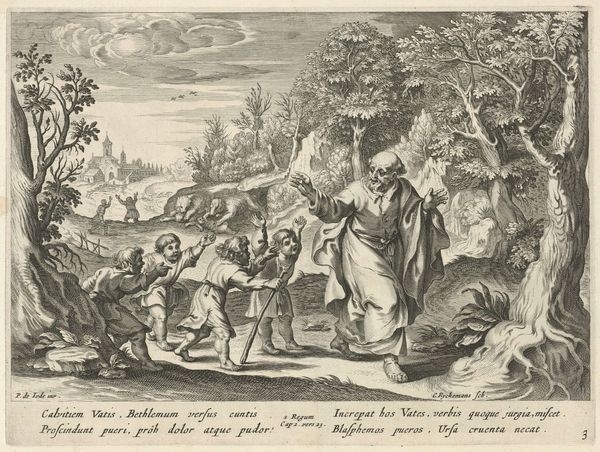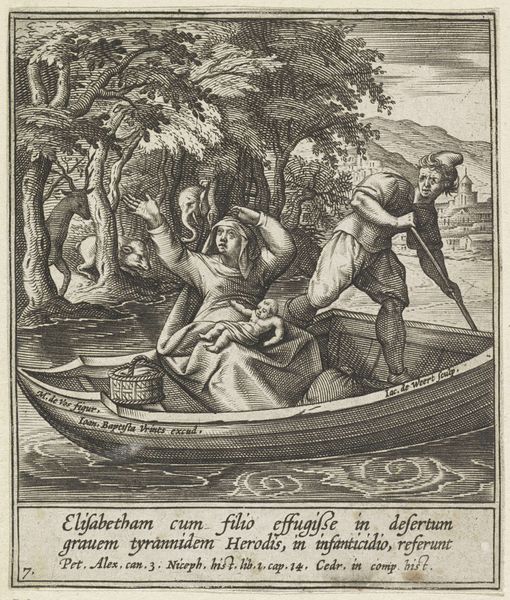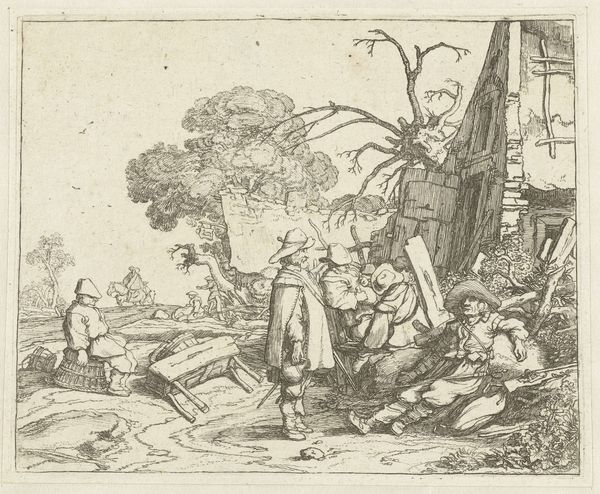
engraving
#
narrative-art
#
baroque
#
landscape
#
figuration
#
line
#
cityscape
#
genre-painting
#
history-painting
#
engraving
Dimensions: height 102 mm, width 138 mm
Copyright: Rijks Museum: Open Domain
Curator: Pieter Serwouters created this engraving, "The Banishment of the Adulterous Woman and her Lover," in 1642. The artwork presents two distinct scenes separated spatially within the same frame. Editor: My eye is immediately drawn to the duality in the composition. The stark contrast between the bustling boat scene on the left and the figures standing still on the shore. The entire composition seems divided and fraught. Curator: Precisely. The left side shows a boat full of people being rowed away from a shore, while the right side depicts a well-dressed couple being banished from what we might perceive as an exotic Eden with various instruments laying around their feet. The scene reflects both colonial narratives and societal moral codes of the 17th century. How do you see those reflected symbolically? Editor: The ships on the horizon point to global trade, colonization, and the transfer of power across vast distances. The act of banishment signifies not only geographical displacement but also the loss of status and belonging. The instruments on the ground look staged to reflect the failings of man and his own expulsion. They feel less about an historic moment and more like a play meant to show an important idea. The whole image seems allegorical to societal shifts of power that were becoming increasingly widespread at the time. Curator: And beyond power, let's also consider gender and moral power during that time. The banishment scene isn’t just about uprooting individuals; it reflects how the bodies of women, in particular, became sites of governance and societal anxiety in the colonial context. Banishment functioned as a theatrical expression of dominance, silencing dissent, and reaffirming patriarchal structures, both in Europe and abroad. How do these specific characters of women take on new context from the instruments that you described earlier? Editor: It feels reminiscent of the tale of Adam and Eve. Here is a modern-day Eve with their possessions that brought her undoing on display for the audience. It's not just an indictment of those exiled, but an expression of power. And as these exiled people make their way toward that large boat full of witnesses, what are they going to do when they arrive to their banishment destination? The viewer is left wondering so much about this new colony being set up that may be doomed to follow the fate that the opening scene foreshadows. Curator: Indeed, considering Serwouters' choice of this narrative lets us confront complex issues of race, gender, class, and moral power intertwined with global histories. Editor: It urges me to question what continuities and ruptures these symbols carry from then to now, reflecting on the many ways in which images shape collective memory and understanding.
Comments
No comments
Be the first to comment and join the conversation on the ultimate creative platform.

